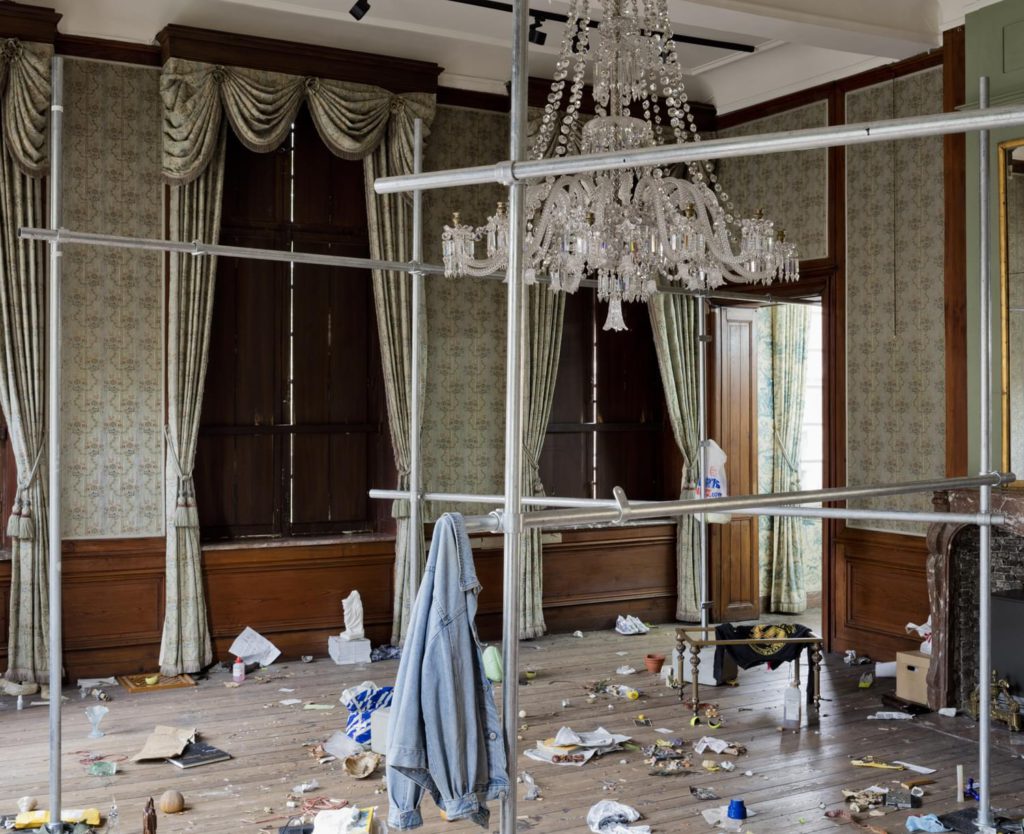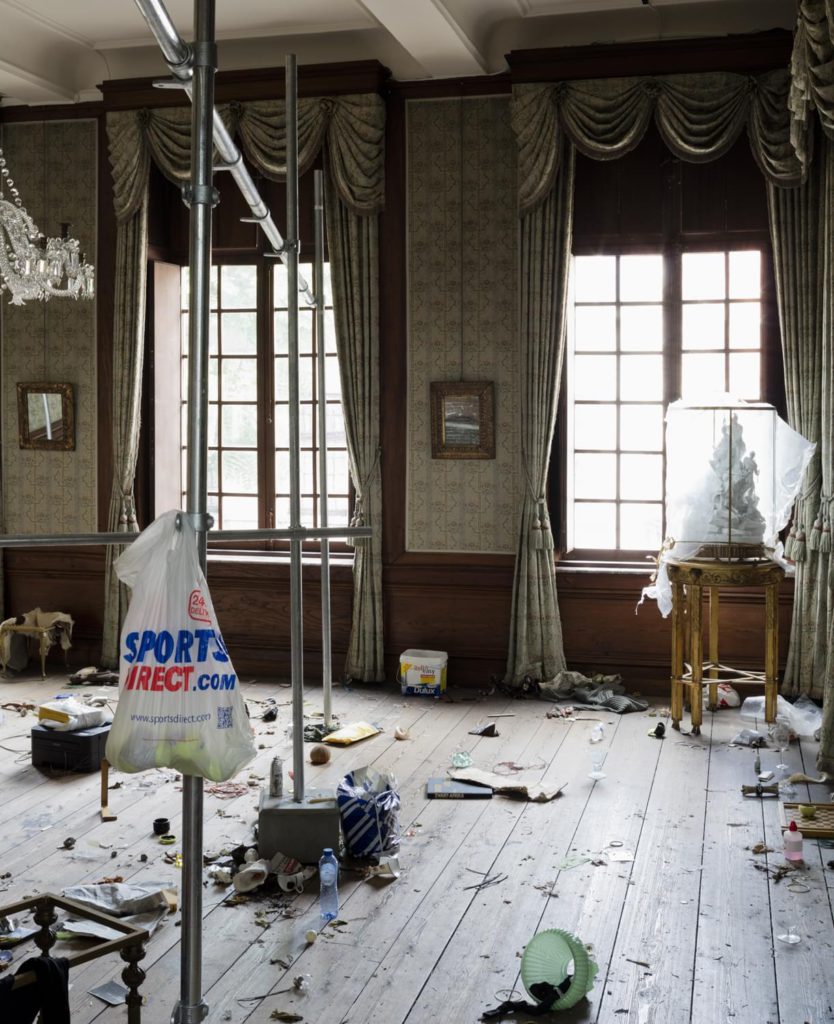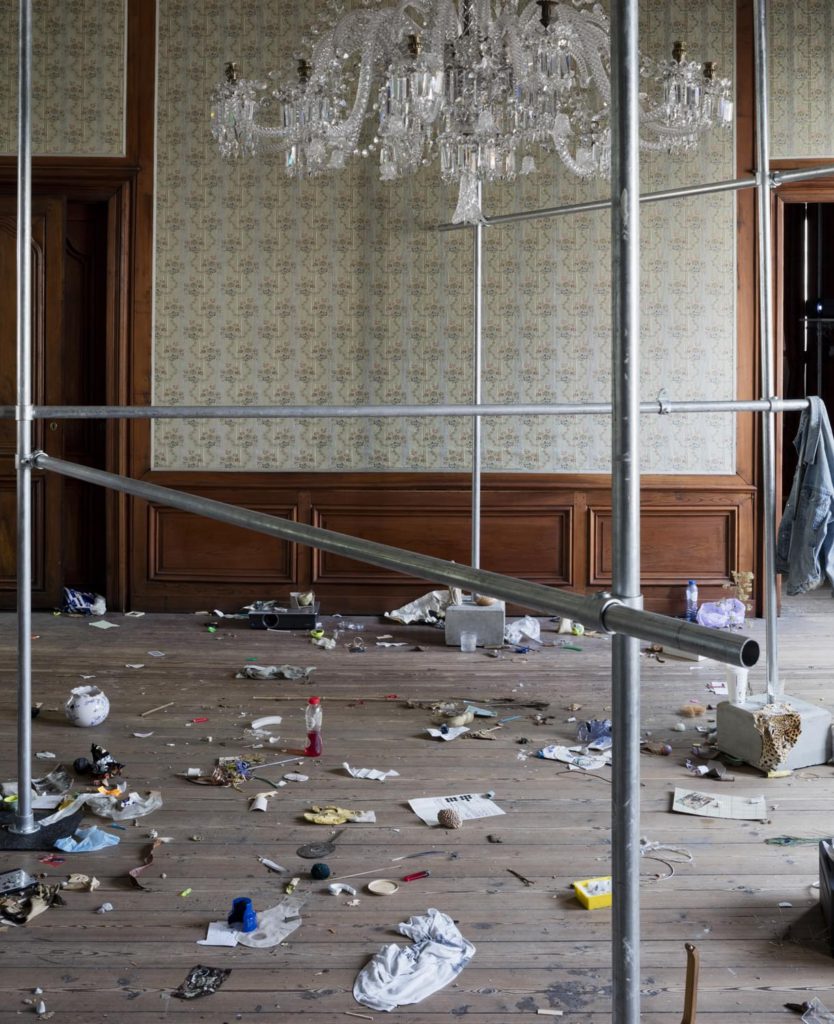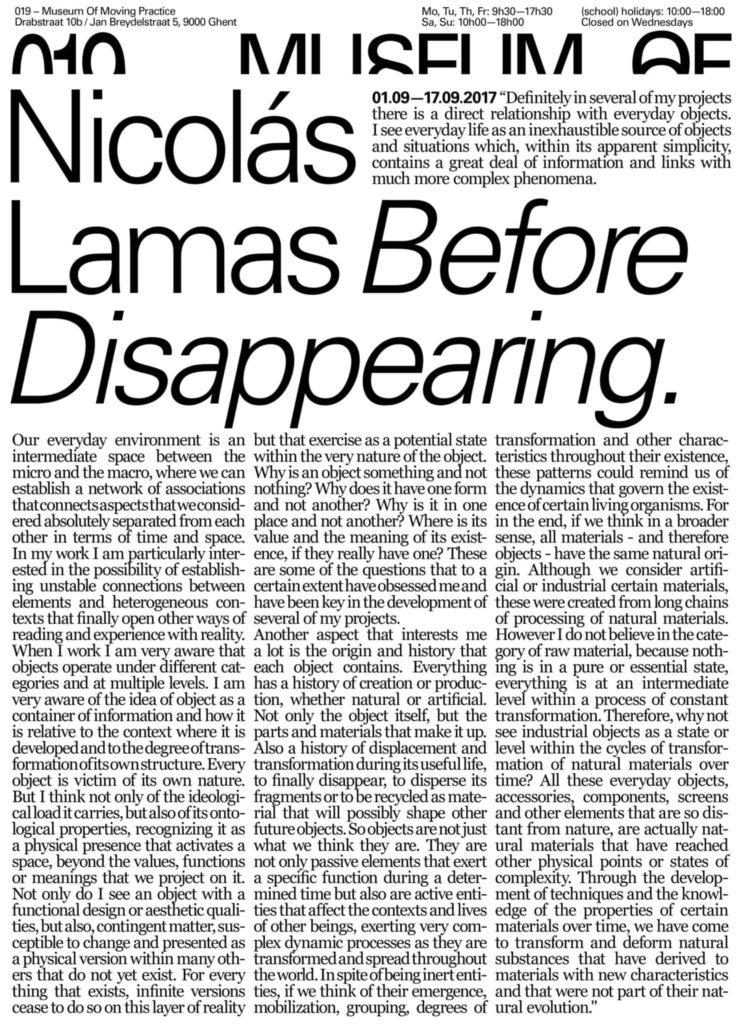Nicolás Lamas: Before Disappearing
Museum Of Moving Practice
01/09/2017 – 17/09/2017
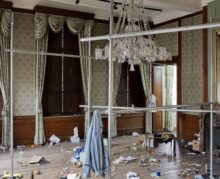
“Definitely in several of my projects there is a direct relationship with everyday objects. I see everyday life as an inexhaustible source of objects and situations which, within its apparent simplicity, contains a great deal of information and links with much more complex phenomena. Our everyday environment is an intermediate space between the micro and the macro, where we can establish a network of associations that connects aspects that we considered absolutely separated from each other in terms of time and space. In my work I am particularly interested in the possibility of establishing unstable connections between elements and heterogeneous contexts that finally open other ways of reading and experience with reality. When I work I am very aware that objects operate under different categories and at multiple levels. I am very aware of the idea of object as a container of information and how it is relative to the context where it is developed and to the degree of transformation of its own structure. Every object is victim of its own nature. But I think not only of the ideological load it carries, but also of its ontological properties, recognizing it as a physical presence that activates a space, beyond the values, functions or meanings that we project on it. Not only do I see an object with a functional design or aesthetic qualities, but also, contingent matter, susceptible to change and presented as a physical version within many others that do not yet exist. For every thing that exists, infinite versions cease to do so on this layer of reality but that exercise as a potential state within the very nature of the object. Why is an object something and not nothing? Why does it have one form and not another? Why is it in one place and not another? Where is its value and the meaning of its existence, if they really have one? These are some of the questions that to a certain extent have obsessed me and have been key in the development of several of my projects.
Another aspect that interests me a lot is the origin and history that each object contains. Everything has a history of creation or production, whether natural or artificial. Not only the object itself, but the parts and materials that make it up. Also a history of displacement and transformation during its useful life, to finally disappear, to disperse its fragments or to be recycled as material that will possibly shape other future objects. So objects are not just what we think they are. They are not only passive elements that exert a specific function during a determined time but also are active entities that affect the contexts and lives of other beings, exerting very complex dynamic processes as they are transformed and spread throughout the world. In spite of being inert entities, if we think of their emergence, mobilization, grouping, degrees of transformation and other characteristics throughout their existence, these patterns could remind us of the dynamics that govern the existence of certain living organisms. For in the end, if we think in a broader sense, all materials – and therefore objects – have the same natural origin. Although we consider artificial or industrial certain materials, these were created from long chains of processing of natural materials. However I do not believe in the category of raw material, because nothing is in a pure or essential state, everything is at an intermediate level within a process of constant transformation. Therefore, why not see industrial objects as a state or level within the cycles of transformation of natural materials over time? All these everyday objects, accessories, components, screens and other elements that are so distant from nature, are actually natural materials that have reached other physical points or states of complexity. Through the development of techniques and the knowledge of the properties of certain materials over time, we have come to transform and deform natural substances that have derived to materials with new characteristics and that were not part of their natural evolution.”
